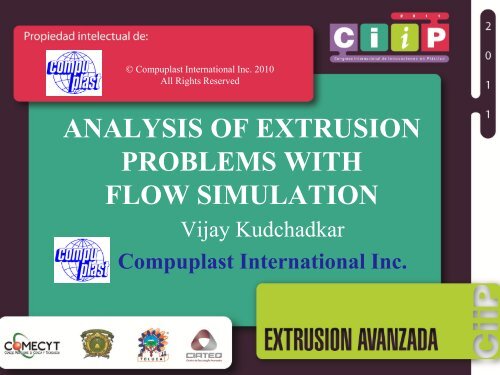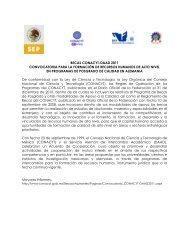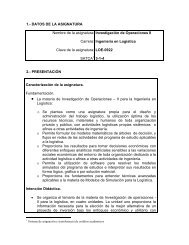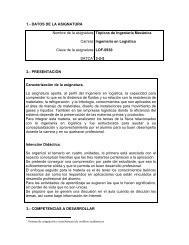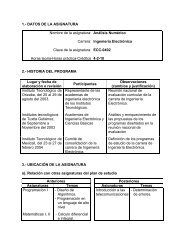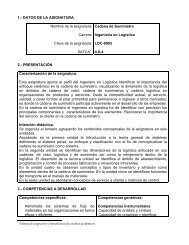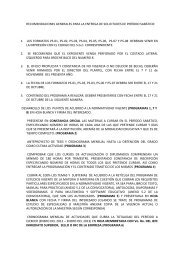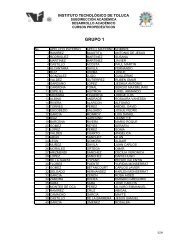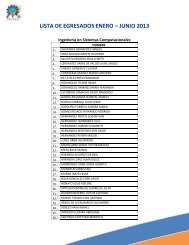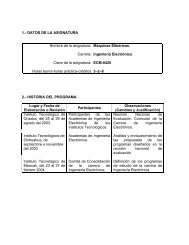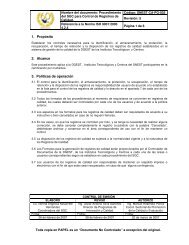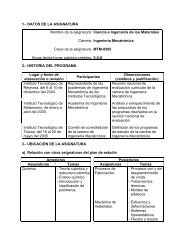Compuplast International Inc.
Compuplast International Inc.
Compuplast International Inc.
- No tags were found...
You also want an ePaper? Increase the reach of your titles
YUMPU automatically turns print PDFs into web optimized ePapers that Google loves.
© <strong>Compuplast</strong> <strong>International</strong> <strong>Inc</strong>. 2010All Rights ReservedANALYSIS OF EXTRUSIONPROBLEMS WITHFLOW SIMULATIONVijay Kudchadkar<strong>Compuplast</strong> <strong>International</strong> <strong>Inc</strong>.© <strong>Compuplast</strong> <strong>International</strong> <strong>Inc</strong>. 2011All Rights Reserved
Objectives• Demonstrate the application ofCAE/CFD/Simulation towards extrusion• Show how simulation can be used totroubleshoot an extrusion process• Explain certain observations or phenomena withthe aid of simulation.• All simulations performed using the<strong>Compuplast</strong>® Virtual Extrusion Laboratory(VEL) Suite of CAE Tools for Extrusion© <strong>Compuplast</strong> <strong>International</strong> <strong>Inc</strong>. 2011All Rights Reserved
Problem: Particles in Film Sample• In this system, periodic “showers” of particleswere observed in the film sample.© <strong>Compuplast</strong> <strong>International</strong> <strong>Inc</strong>. 2011All Rights Reserved
Photo of Extruder Screw• The screw used to produce the filmhad a noticeable discoloration in thefeed and compression region.© <strong>Compuplast</strong> <strong>International</strong> <strong>Inc</strong>. 2011All Rights Reserved
Comprehensive Tests with the Macro GlassWindow ExtruderSong, Perdikoulias and Planeta, ANTEC 2000© <strong>Compuplast</strong> <strong>International</strong> <strong>Inc</strong>. 2011All Rights Reserved
Comprehensive Tests with theGlass Window ExtruderLDPE 50 RPM @ W2 & W3, melt @ ~ 17D© <strong>Compuplast</strong> <strong>International</strong> <strong>Inc</strong>. 2011All Rights Reserved
Solid Bed Break-Up• Improper screw design results in solid bedbreak-up and there is no mixer to compensate© <strong>Compuplast</strong> <strong>International</strong> <strong>Inc</strong>. 2011All Rights Reserved
Inhomogeneous MeltFlow Direction• Gray areas represent material that has not been properlymixed or homogenized.© <strong>Compuplast</strong> <strong>International</strong> <strong>Inc</strong>. 2011All Rights Reserved
Define: Solid Bed RatioSolid BedMelt PoolFlowDirectionChannel Width• Ratio of Solid bed width toChannel Width• Indication of meltingcapability of the screw© <strong>Compuplast</strong> <strong>International</strong> <strong>Inc</strong>. 2011All Rights ReservedSolid BedRatio =SB WidthChannel Width
Analysis of Solid Bed RatioSimulation indicates that the Solid bed ratio does not reducegradually as preferred but actually increases near center of screw.© <strong>Compuplast</strong> <strong>International</strong> <strong>Inc</strong>. 2011All Rights Reserved
Solution: Modify Process Conditions,Change Material or Screw Design toachieve better melting performanceGood melting© <strong>Compuplast</strong> <strong>International</strong> <strong>Inc</strong>. 2011All Rights Reserved
Problem: Polymer Degradation• Screen Changer• Flat Die Manifold© <strong>Compuplast</strong> <strong>International</strong> <strong>Inc</strong>. 2011All Rights Reserved
Degradation onSCREW / BARREL / SCREENCHANGER90 mm Diameter250 kg/hr LDPE @ 190 CShear Rate = 1.3/sShear Stress = 5 kPa© <strong>Compuplast</strong> <strong>International</strong> <strong>Inc</strong>. 2011All Rights Reserved
The role of wall shear stress=Velocity= 0 = maxShear StressHigh enough shear stresscleans the wall by scrubbingWhat is high enough?LDPEPVC© <strong>Compuplast</strong> <strong>International</strong> <strong>Inc</strong>. 2011All Rights Reserved30 kPa35 kPaHDPELLDPE30 kPa30 kPa
DegradationSCREW / BARREL / SCREENCHANGER© <strong>Compuplast</strong> <strong>International</strong> <strong>Inc</strong>. 2011All Rights Reserved
Original ShapeShear stresses inside the flow domain© <strong>Compuplast</strong> <strong>International</strong> <strong>Inc</strong>. 2011All Rights Reserved
New ShapeShear stresses inside the flow domain© <strong>Compuplast</strong> <strong>International</strong> <strong>Inc</strong>. 2011All Rights Reserved
Degradation onSCREW / BARREL / SCREENCHANGER(Improved design)© <strong>Compuplast</strong> <strong>International</strong> <strong>Inc</strong>. 2011All Rights Reserved
Problem: Degradation andDamage in Flat Die Manifold• The outer edges of the manifold exhibitdegradation and even corrosion damage.© <strong>Compuplast</strong> <strong>International</strong> <strong>Inc</strong>. 2011All Rights Reserved
Simulation Results: Shear Stress• Low shear stress at outer edge of manifold results ininsufficient purge characteristics.• Polymer exhibits long residence time and ultimatelydegrades.• Some polymer degradation results in corrosivebyproducts.© <strong>Compuplast</strong> <strong>International</strong> <strong>Inc</strong>. 2011All Rights Reserved
Polymer Degradation Solution• Ensure adequate shear stressin all flow channels.– Proper Channel Design– Proper Operation Conditions© <strong>Compuplast</strong> <strong>International</strong> <strong>Inc</strong>. 2011All Rights Reserved
Problem: Periodic Lines inTubular Film Bubble• Lines appear as a visual defect in filmproduced on a spiral mandrel type die.© <strong>Compuplast</strong> <strong>International</strong> <strong>Inc</strong>. 2011All Rights Reserved
Potential Problem• With some Spiral Mandrel type dies, aflow defect is sometimes observed thatappears like a weld line in the product.• It may also be observed in the product asa very localized thin section that repeatsaround the circumference of the die asmany times as there are spirals.© <strong>Compuplast</strong> <strong>International</strong> <strong>Inc</strong>. 2011All Rights Reserved
The Spiral Mandrel Flow Field© <strong>Compuplast</strong> <strong>International</strong> <strong>Inc</strong>. 2011All Rights Reserved
Spiral Mandrel Flow Video© <strong>Compuplast</strong> <strong>International</strong> <strong>Inc</strong>. 2011All Rights Reserved
3D FEM - Pressure Drop© <strong>Compuplast</strong> <strong>International</strong> <strong>Inc</strong>. 2011All Rights Reserved
© <strong>Compuplast</strong> <strong>International</strong> <strong>Inc</strong>. 2011All Rights Reserved3D FEM Velocity
3D FEM Velocity (2 of 3 sections)© <strong>Compuplast</strong> <strong>International</strong> <strong>Inc</strong>. 2011All Rights Reserved
3D FEM - Shear StressLow Shear Stress© <strong>Compuplast</strong> <strong>International</strong> <strong>Inc</strong>. 2011All Rights Reserved
3D Flow AnalysisParticle Path Line Seeds• Velocity contours for 2/3 of the die and path line seedlocations© <strong>Compuplast</strong> <strong>International</strong> <strong>Inc</strong>. 2011All Rights Reserved
© <strong>Compuplast</strong> <strong>International</strong> <strong>Inc</strong>. 2011All Rights Reserved3D FEM - Particle Path
3D FEM - Particle PathsParticle PathFrom All Rights Next Reserved Spiral© <strong>Compuplast</strong> <strong>International</strong> <strong>Inc</strong>. 2011
Particle Path Lines• Particle path lines showing "back flow"© <strong>Compuplast</strong> <strong>International</strong> <strong>Inc</strong>. 2011All Rights Reserved
Particle Paths Avoid Low Shear Stress© <strong>Compuplast</strong> <strong>International</strong> <strong>Inc</strong>. 2011All Rights Reserved
The Back-Flow Essentially Forms Weld Line© <strong>Compuplast</strong> <strong>International</strong> <strong>Inc</strong>. 2011All Rights Reserved
Problem: Lines in Flat Film© <strong>Compuplast</strong> <strong>International</strong> <strong>Inc</strong>. 2011All Rights Reserved
Poorly designed flat spiral distributor© <strong>Compuplast</strong> <strong>International</strong> <strong>Inc</strong>. 2011All Rights Reserved
Poorly designed flat spiral distributor© <strong>Compuplast</strong> <strong>International</strong> <strong>Inc</strong>. 2011All Rights Reserved
Spiral Back-Flow Solution• Design spiral distribution systemto control the leakage flow fromthe spirals and ensure adequatevelocity (and shear stress) alongthe entire channel.© <strong>Compuplast</strong> <strong>International</strong> <strong>Inc</strong>. 2011All Rights Reserved
Problem Definition• In a 3 layer coextrusion, the thincenter layer exhibits an interfacialinstability that is observed on theextruded film.• Why?• How can it be removed?© <strong>Compuplast</strong> <strong>International</strong> <strong>Inc</strong>. 2011All Rights Reserved
© <strong>Compuplast</strong> <strong>International</strong> <strong>Inc</strong>. 2011All Rights ReservedFeed-block system
Velocity profile on the original feedblockV max = 113 mm/sV max = 14.6 mm/sV max = 64.6 mm/sCentral layer acceleration 64.6/14.6 = 4.4© <strong>Compuplast</strong> <strong>International</strong> <strong>Inc</strong>. 2011All Rights Reserved
Second material flow passage original designArea of highacceleration© <strong>Compuplast</strong> <strong>International</strong> <strong>Inc</strong>. 2011All Rights Reserved
Deformation rate of the central layer4.5 1/s2.97 1/s© <strong>Compuplast</strong> <strong>International</strong> <strong>Inc</strong>. 2011All Rights Reserved
Velocity profile on modified feedblockV max = 82 mm/sBetterbalancedvelocitiesV max = 26 mm/sV max = 64.6 mm/sCentral layer acceleration 64.6/26 = 2.5© <strong>Compuplast</strong> <strong>International</strong> <strong>Inc</strong>. 2011All Rights Reserved
Second material flow passage modified designLoweracceleration© <strong>Compuplast</strong> <strong>International</strong> <strong>Inc</strong>. 2011All Rights Reserved
Deformation rate of the central layer2.5 1/s1.95 1/s© <strong>Compuplast</strong> <strong>International</strong> <strong>Inc</strong>. 2011All Rights Reserved
Explanation and Solution• It was observed that the flow balancingin the lamella region helped to improvedthe production stability (interfacialinstability disappeared)• The flow balancing reduced theelongational rate of the center layer andthe interface distortion was minimized.© <strong>Compuplast</strong> <strong>International</strong> <strong>Inc</strong>. 2011All Rights Reserved
Concluding Remarks• Process simulation provides moreinformation for correlation betweenprocess conditions and productionproblems.• Simulation gives new insight intoproblems, which can lead to fasterand more precise solutions.© <strong>Compuplast</strong> <strong>International</strong> <strong>Inc</strong>. 2011All Rights Reserved
THANK YOU!!!Questions?Vijay Kudchadkarwww.COMPUPLAST.comvk@compuplast.com© <strong>Compuplast</strong> <strong>International</strong> <strong>Inc</strong>. 2011All Rights Reserved


